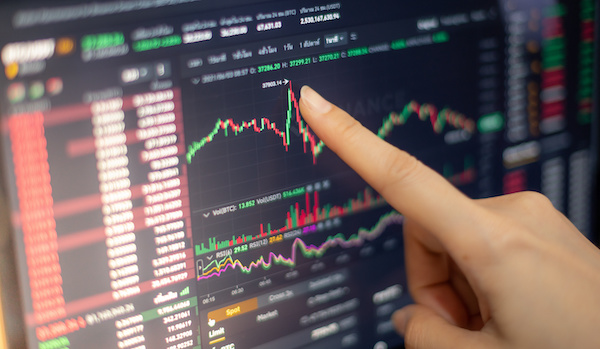
It might seem like over the past year or so everybody turned into a trader. Whether it’s the stock market, Bitcoin, or something else, social media is suddenly full of trading gurus. And if you’re new to the market, it’s easy to get confused by the shouting matches between different types of traders and investments.
In this short trader’s guide, we’ll explore different asset classes, trading strategies, and investment styles — linking that all to your own financial goals.
Know Your Goals
Usually a trader’s guide for beginners starts with selecting brokerage accounts. That’s the least important thing.
While of course, you’ll need a brokerage account to trade, most online brokers are more or less the same. They all offer access to Nasdaq, the New York Stock Exchange, and other leading markets. In addition to stocks, most also offer the ability to invest in options and other instruments.
Shopping around for the cheapest broker doesn’t make much sense: Usually, there are only minor differences in pricing. Since Robinhood pioneered zero-fee trading, many brokerages also cut their fees to zero or close to that.
It’s way more important to take some time and think carefully about your financial goals. Why do you want to start trading?
While “making money” might seem like the obvious answer, you should dig deeper. Answering these questions will help you find the right trading strategy:
- Do you want income today or in the future? If you want to use trading to supplement your current income, you’ll probably need an active strategy with higher risks, unless you already have enough capital for an income portfolio. That’s because today’s yields on most assets are low (although there are exceptions). If you have big long-term goals, such as building a portfolio for retirement, you can probably take a more passive approach and focus on increasing your income instead of spending time on active trading.
- How much capital do you have? With less capital, you’ll likely need to take higher risks to generate meaningful income or capital gains. That’s because risk and return are closely correlated; investors and traders are paid to take risks.
- How much risk can you tolerate? You should think carefully about how much of your allocated capital you can afford to lose. The main risks are volatility (short-term price fluctuations) and low liquidity (not being able to sell fast). As a trader or investor, you are also paid to take on these risks.
Now that you have a clearer picture of what you want to achieve with trading, it’s time to look at specific asset classes and other elements of a trading strategy.
A Trader’s Guide to Building a Strategy

Imagination is probably the only thing that limits the breadth of trading strategies. People (and algorithms) trade all kinds of financial instruments based on virtually unlimited data and on any time frame.
To make sense of all this, we’ll divide trading strategies by asset, decision-making, and time frames as well as trading styles.
Asset Classes
While most new investors first think of the stock market, that’s not the only financial market.
Financial markets today include several asset classes:
- Fixed Income: These are Treasury notes, bonds, and other securities that pay a fixed return. Because investment lots for this asset class usually start with $100,000, it’s dominated by institutional investors and other professionals.
- Equities: This is the stock market, and that’s where most small traders play. This asset class includes relatively safe blue-chip stocks (large caps like the ones included in the Dow Jones index) and also high-risk penny stocks with small market capitalization that are subject to wild price swings.
- Derivatives: This asset class is comprised of instruments that are derived from equities or other assets. Most importantly, this includes futures and options, the two types of securities that offer built-in leverage and can amplify both risks and returns. In addition to placing speculative bets, options trading strategies could also be used to generate income.
- Foreign exchange markets: This is a global market that trades the U.S. dollar and other currencies against each other. The actual market is only opened to global banks. Some brokers also offer forex trading to small retail traders and provide leverage of up to 100 times. Over the long term, most of these small traders lose money. Even with low volatility, high leverage is enough to wipe out the entire deposit.
- Cryptocurrencies: Bitcoin is now a 24/7 market with billions of dollars in trading volume. It’s the youngest market with no established fundamentals and with extreme volatility. Over the past years, hedge funds and other professionals have entered the cryptocurrency market en-masse, so the days of easy gains are probably behind us.
Which of these asset classes should you pick? Our advice would be stocks and options. These two asset classes have enough opportunities for traders and investors of all kinds.
Decision-Making: Fundamental, Macro, and Technical Analysis
You’ve probably heard that traders and investors do some kind of analysis. Even though most of the terms thrown around in a usual trader’s guide might sound like gibberish, it all can be categorized into three ways to make decisions:
- Fundamental analysis: This is about looking at the company’s financial statements to analyze it as a business. How does the company make money? How is it doing financially? How is its competitive situation? Are its products selling well? Investors who look at fundamentals typically take a long-term view and either try to find companies that are poised for further growth (growth investing) or are currently undervalued (value investing). The best-known fundamental investor is undoubtedly Warren Buffett.
- Technical analysis: This is about trying to make predictions from price data alone. Adherents of this approach often claim that all fundamental information is already included in the price. So instead of looking at statements, they look at charts and price data. Based on open, close, high, and low prices for weeks, days, hours, or even minutes, they construct complicated indicators that aim to analyze volatility, liquidity, and other factors that drive price action.
- Macro analysis: Instead of looking at financial statements or price charts, investors who follow this approach examine macroeconomic data, such as inflation, employment, interest rates, and more. This is probably the most complex analysis and also potentially the most profitable in the long term. The best-known macro traders are probably George Soros and Paul Tudor Jones.
When deciding on a trading strategy, it’s best to pick one of these schools of thought and stick to it. It might seem like combining several analytical tools would yield better results, but in reality, this would likely only produce more confusion. The best trading strategy is usually the most simple one.
Still, even when applying the same analytical lenses, traders and investors can come to drastically different conclusions based on their time frames.
Trading Time Frames and Styles

A time frame refers to the time a trend lasts. Some traders look at trends on an hourly chart. And some investors think in terms of decades.
The preferred time frame is mostly defined by trading style:
- Day trading: As the name suggests, day traders trade on a daily basis and aim to close trades within the same trading day. They try to profit from price fluctuations by trading frequently without locking up too much capital for the long term.
- Active trading: These speculators have longer time frames but are still focused on the short term. For example, they could buy shares after bad corporate news, aiming to turn a profit in a few weeks or months after sentiment improves.
- Active investing: These investors all have different strategies, but the common idea is to find either undervalued companies that will bounce back to fair valuations or find companies that are fairly valued and offer attractive dividend yields or have great growth prospects. These investors typically look several years or even decades ahead.
- Passive investing: These investors simply invest in ETFs or mutual funds that track the S&P 500, Nasdaq 100, or other stock indices. They argue that it’s nearly impossible to outperform the market in the long term.
The list above goes from the most time consuming (day trading) to the least time consuming (passive investing).
Day trading is often glamorized online, but in reality, it is a demanding and stressful day job. And without decent capital, it would probably be a poorly paid job.
The other trading styles would suit different people. For those who don’t have much time or desire to learn investing and trading, the passive approach would be the obvious solution. And if you have a general interest in financial markets, you can start learning by actively investing in stocks and later doing some active trades in the options market.
Start Building the Right Foundations
This trader’s guide is just the beginning of a long journey to learning how to make money in the financial markets. We’ve explored the importance of starting with goals in mind and reviewed different asset classes, types of analysis, and timeframes. These are the main building blocks of any trading strategy.
While there is both art and science to trading and investments, you don’t need to master it on your own. You can build the right foundations by actively investing high-quality stocks, and the easiest way to do that is by subscribing to Investors Alley’s “Dividend Hunter” newsletter.





